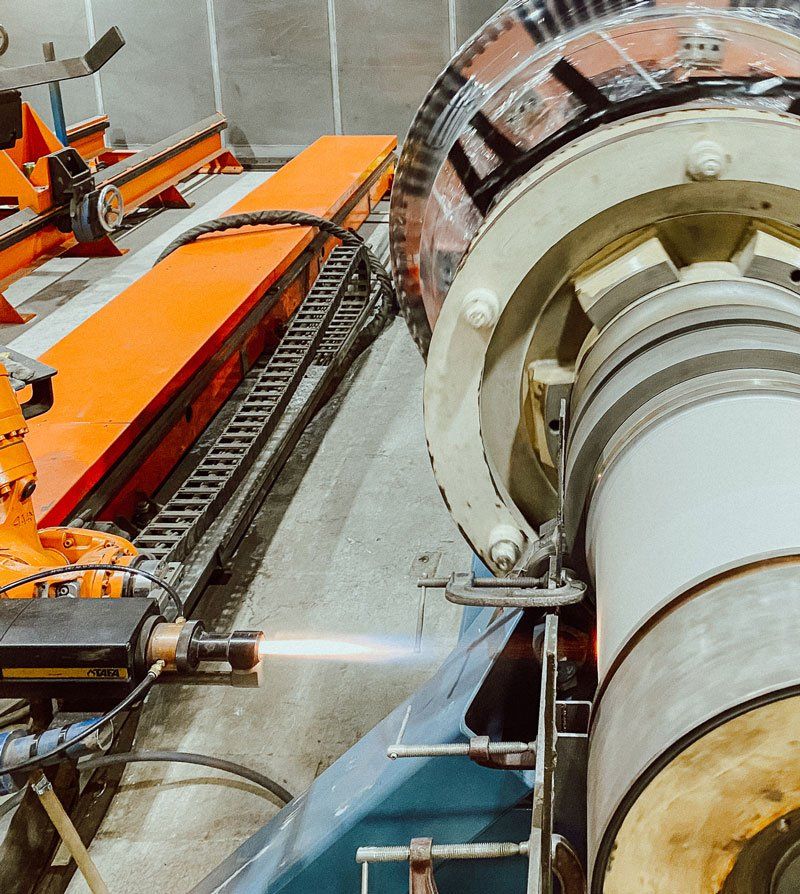HIGH VELOCITY AIR FUEL (HVAF)
The pinnacle of high-velocity thermal coatings.
HVAF has the highest particle impact velocity out of all thermal spray coating systems, meaning that HVAF coatings are harder, denser (less porous), and have considerably higher bond strength. And, with only 17.5% of CO2 emissions that HVOF produces, HVAF is significantly more environmentally friendly.
Cavitation resistant
The only thermal spray coating that is cavitation resistant! Because HVAF operates at lower temperatures (1900-1950°C), it minimises oxidation (similar to cold spray) and produces superior adhesion and toughness — key properties for resisting cavitation.
Harder, denser & ductile
With high bond strength, these ductile coatings are impact resistant. The hardness is higher for the same material when compared to other coating techniques, while the smooth “as sprayed” finish requires minimal finishing. HVAF also provides an exceptionally dense coating with very low porosity levels (<0.5%).
Greater applications
We can spray both metals and carbides, including oxygen-sensitive materials, on metal and non-metals. Coatings can also be applied thinner and thicker than HVOF (30µm to 2mm+), and we’re able to spray internal diameters (down to 120mm).
What we’re doing
The HVAF process involves using compressed air and fuel (LPG) to heat and accelerate fine powder on the prepared work surface to create superior, high-performance protective coatings.
The system allows for the largest range of temperatures and velocities, meaning we can spray many more materials than other systems (particularly at lower temperatures).
Is HVAF right for you?
HVAF coatings offer exceptional wear, corrosion, and cavitation resistance, making them ideal for harsh industrial environments. If you're dealing with abrasion, corrosion, or high-impact conditions, HVAF may be the perfect solution for your equipment.
Quality coating options
Our range of high-performance HVAF coatings are designed to enhance wear resistance, corrosion protection, and overall equipment longevity, making them ideal for demanding industrial applications.
Not sure which coating is right for your application? Contact us for expert advice.
Nickel Chrome
Excellent corrosion and oxidation resistance, ideal for high-temperature environments.
Tungsten Carbide
Extreme hardness and wear resistance, perfect for abrasive and high-impact applications.
Chrome Carbide
Superior protection against heat, erosion, and metal-to-metal wear.
Other Specialty Coatings
Customised solutions tailored to your specific industry needs.
Get a quote.
HVAF coatings outperform traditional thermal spray coatings every time.
Unmatched cavitation resistance
Superior adhesion & hardness
Lower porosity & oxidation
Extended equipment lifespan








